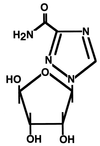Respiratory syncytial virus infection: immune response, immunopathogenesis, and treatment
- PMID: 10194461
- PMCID: PMC88919
- DOI: 10.1128/CMR.12.2.298
Respiratory syncytial virus infection: immune response, immunopathogenesis, and treatment
Abstract
Respiratory syncytial virus (RSV) is the single most important cause of lower respiratory tract infection during infancy and early childhood. Once RSV infection is established, the host immune response includes the production of virus-neutralizing antibodies and T-cell-specific immunity. The humoral immune response normally results in the development of anti-RSV neutralizing-antibody titers, but these are often suboptimal during an infant's initial infection. Even when the production of RSV neutralizing antibody following RSV infection is robust, humoral immunity wanes over time. Reinfection during subsequent seasons is common. The cellular immune response to RSV infection is also important for the clearance of virus. This immune response, vital for host defense against RSV, is also implicated in the immunopathogenesis of severe lower respiratory tract RSV bronchiolitis. Many details of the immunology and immunopathologic mechanisms of RSV disease known at present have been learned from rodent models of RSV disease and are discussed in some detail. In addition, the roles of immunoglobulin E, histamine, and eosinophils in the immunopathogenesis of RSV disease are considered. Although the treatment of RSV bronchiolitis is primarily supportive, the role of ribavirin is briefly discussed. Novel approaches to the development of new antiviral drugs with promising anti-RSV activity in vitro are also described.
Figures



Similar articles
-
RI-002, an intravenous immunoglobulin containing high titer neutralizing antibody to RSV and other respiratory viruses for use in primary immunodeficiency disease and other immune compromised populations.Expert Rev Clin Immunol. 2017 Dec;13(12):1107-1119. doi: 10.1080/1744666X.2017.1389647. Epub 2017 Oct 16. Expert Rev Clin Immunol. 2017. PMID: 29035131 Free PMC article. Review.
-
Enhanced humoral and CD8+ T cell immunity in mice vaccinated by DNA vaccine against human respiratory syncytial virus through targeting the encoded F protein to dendritic cells.Int Immunopharmacol. 2017 May;46:62-69. doi: 10.1016/j.intimp.2017.02.023. Epub 2017 Mar 1. Int Immunopharmacol. 2017. PMID: 28259002
-
Humoral and Mucosal Antibody Response to RSV Structural Proteins in RSV-Infected Adult Hematopoietic Cell Transplant (HCT) Recipients.Viruses. 2021 May 26;13(6):991. doi: 10.3390/v13060991. Viruses. 2021. PMID: 34073490 Free PMC article.
-
Young infants can develop protective levels of neutralizing antibody after infection with respiratory syncytial virus.J Infect Dis. 2008 Oct 1;198(7):1007-15. doi: 10.1086/591460. J Infect Dis. 2008. PMID: 18702606
-
Modulation of the host immune response by respiratory syncytial virus proteins.J Microbiol. 2017 Mar;55(3):161-171. doi: 10.1007/s12275-017-7045-8. Epub 2017 Feb 28. J Microbiol. 2017. PMID: 28243940 Review.
Cited by
-
A case-crossover study of wintertime ambient air pollution and infant bronchiolitis.Environ Health Perspect. 2006 Feb;114(2):277-81. doi: 10.1289/ehp.8313. Environ Health Perspect. 2006. PMID: 16451867 Free PMC article.
-
Animal pneumoviruses: molecular genetics and pathogenesis.Clin Microbiol Rev. 2004 Apr;17(2):390-412. doi: 10.1128/CMR.17.2.390-412.2004. Clin Microbiol Rev. 2004. PMID: 15084507 Free PMC article. Review.
-
Pharmacologic advances in the treatment and prevention of respiratory syncytial virus.Clin Infect Dis. 2010 May 1;50(9):1258-67. doi: 10.1086/651603. Clin Infect Dis. 2010. PMID: 20235830 Free PMC article. Review.
-
A Randomized Phase 1/2 Study of a Respiratory Syncytial Virus Prefusion F Vaccine.J Infect Dis. 2022 Apr 19;225(8):1357-1366. doi: 10.1093/infdis/jiab612. J Infect Dis. 2022. PMID: 34932102 Free PMC article. Clinical Trial.
-
Eosinophils as potential biomarkers in respiratory viral infections.Front Immunol. 2023 Jul 6;14:1170035. doi: 10.3389/fimmu.2023.1170035. eCollection 2023. Front Immunol. 2023. PMID: 37483591 Free PMC article. Review.
References
-
- Ahmad A, Davies J, Randall S, Skinner G R. Antiviral properties of extract of Opuntia streptacantha. Antiviral Res. 1996;30:75–85. - PubMed
-
- American Academy of Pediatrics, Committee on Infectious Diseases, Committee on Fetus and Newborn. Respiratory syncytial virus immune globulin intravenous: indications for use. Pediatrics. 1997;99:645–650. - PubMed
-
- Anderson J J, Norden J, Saunders D, Toms G L, Scott R. Analysis of the local and systemic immune responses induced in BALB/c mice by experimental respiratory syncytial virus infection. J Gen Virol. 1990;71:1561–1570. - PubMed
Publication types
MeSH terms
Substances
LinkOut - more resources
Full Text Sources
Other Literature Sources
Medical

